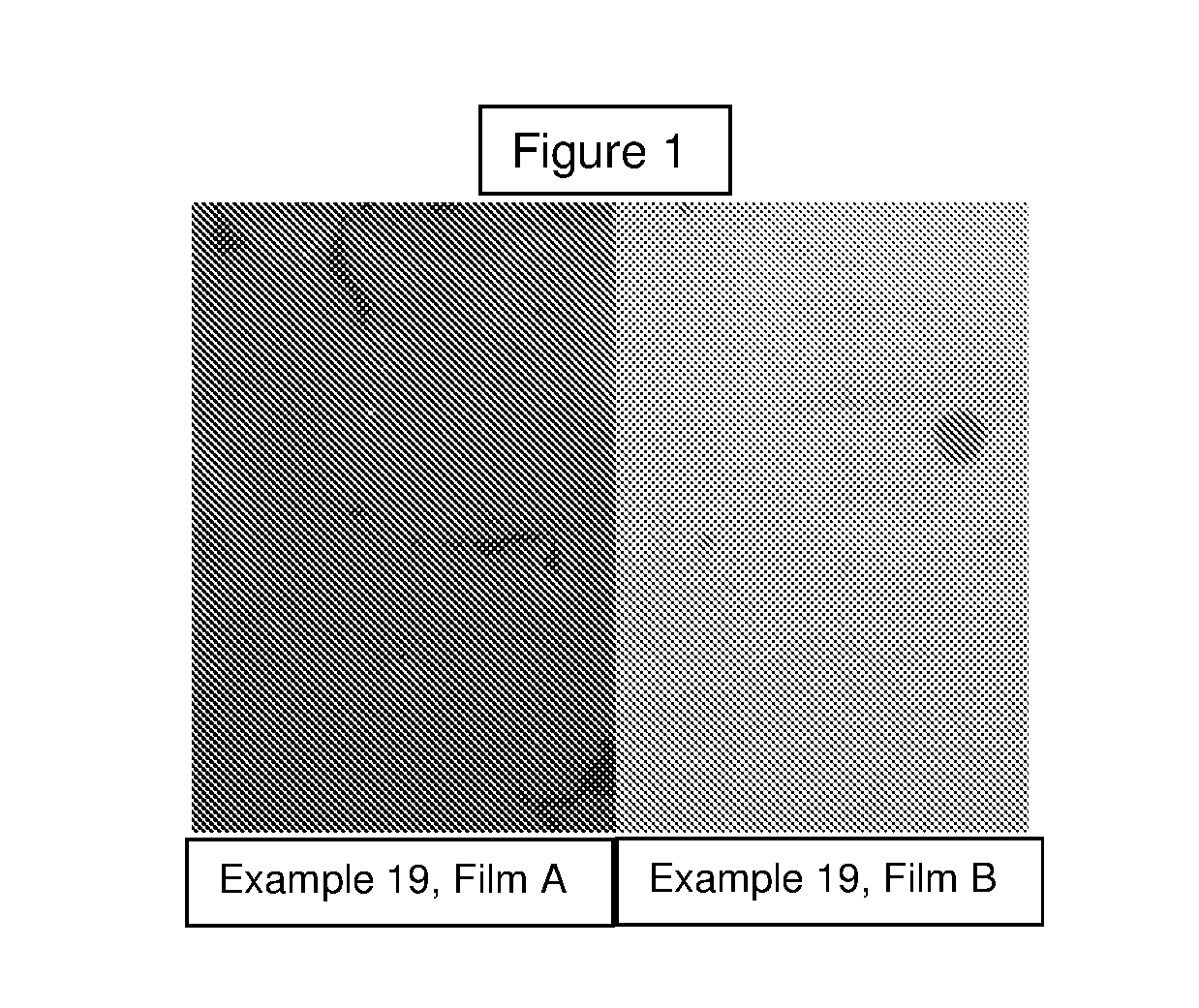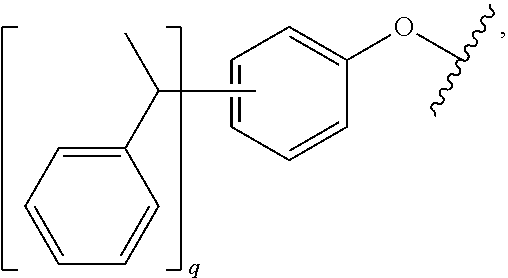Use of Tristyrylphenol Alkoxylate Sulfosuccinates in Emulsion Polymerization and Coatings
a technology of tristyrylphenol and alkoxylate, which is applied in the direction of emulsion paints, adhesive types, coatings, etc., can solve the problems of affecting the final application of surfactants, poor adhesion, and affecting the adhesion of the surface of the latex, so as to improve the water resistance characteristics, improve the water resistance, and reduce the coagulation
- Summary
- Abstract
- Description
- Claims
- Application Information
AI Technical Summary
Benefits of technology
Problems solved by technology
Method used
Image
Examples
example 1
Synthesis of TSP-16 EO Sulfosuccinate Half-Ester
[0088]355 g (0.37 mol) of tristyrylphenol (TSP) 16 mole ethoxylate (POLYSTEP® TSP-16, Stepan Co., Northfield, Ill.) having an equivalent weight of 960 g / mol based on a hydroxyl value of 58.4 mg KOH / g was charged to a 0.5 L four neck round bottom flask. The flask was equipped with an agitator, thermo-couple and heating mantel. The reactor was heated to 55° C. 36 g of maleic anhydride was added (0.37 mol) was added, it quickly dissolved. The reactor was heated to 85° C. under mild agitation. The progress of converting the anhydride to monoester was monitored by FTIR as the peak at 1776 cm−1 corresponding to the starting anhydride was converted to the monoester at 1729 cm−1. Complete conversion to the maleate half-ester took about 200 minutes.
[0089]134 g (0.13 mol) of the TSP-16 maleate half-ester having an equivalent weight of about 1058 g / mol was charged to 0.5 L round bottom flask along with 22 g of water. The flask was equipped with a...
example 2
Synthesis of TSP-1.5 / 16 PO / EO Sulfosuccinate Half-Ester
[0090]395 g (0.35 mol) of TSP alkoxylate (having an average of 1.5 mol propylene oxide (PO)+16 mol ethylene oxide (EO) per mol TSP) having an equivalent weight of 1126 g / mol based on a hydroxyl value of 49.8 mg KOH / g was charged to a 0.5 L four neck round bottom flask. The flask was equipped with an agitator, thermo-couple and heating mantel. The reactor was heated to 60° C. followed by the addition of 34.4 g maleic anhydride (0.35 mol) which dissolved quickly. Heated reaction to 90° C. and was maintained for 120 minutes. Analysis by FTIR indicated disappearance of the peak at 1776 cm−1 corresponding to the starting anhydride.
[0091]149 g (0.12 mol) of the TSP alkoxylate half-ester having an equivalent weigh of about 1224 g / mol was charged to 1 L round bottom flask and warmed to 45° C. 48 g of water and 1.5 g sodium bicarbonate were added followed by adjustment to pH 7.3 with small amount of 50% sodium hydroxide. 25 g of ethanol ...
example 3
Synthesis of TSP-4 EO Sulfosuccinate Half-Ester
[0092]152.9 g (0.28 mol) of TSP alkoxylate (4 mole ethoxylate) having an equivalent weight of 546 g / mol based on a hydroxyl value of 102.7 mg KOH / gram was charged to a 1 L four neck round bottom flask. The flask was equipped with an agitator, thermo-couple and heating mantel. The reactor was heated to 135° C. and sparged with nitrogen to remove residual moisture for one hour, followed by cooling to 95° C. and the addition of 27.4 g maleic anhydride (0.28 mol) which dissolved quickly. Heated reaction to 90° C. and was maintained for 120 minutes. Analysis by FTIR indicated disappearance of the peak at 1776 cm−1 corresponding to the starting anhydride. The reactor was cooled to 58° C. and 2.4 g sodium bicarbonate followed by 28 g water and 16 g ethanol, pH was adjusted from 4.0 to 6.8 with 21.2 g 50% sodium hydroxide along with an additional 50 g water and 41 g ethanol to reduce viscosity. Slowly added 29.2 g sodium bisulfate (0.265 0.27 m...
PUM
| Property | Measurement | Unit |
|---|---|---|
| mean diameter | aaaaa | aaaaa |
| mean diameter | aaaaa | aaaaa |
| temperature | aaaaa | aaaaa |
Abstract
Description
Claims
Application Information
 Login to View More
Login to View More - R&D
- Intellectual Property
- Life Sciences
- Materials
- Tech Scout
- Unparalleled Data Quality
- Higher Quality Content
- 60% Fewer Hallucinations
Browse by: Latest US Patents, China's latest patents, Technical Efficacy Thesaurus, Application Domain, Technology Topic, Popular Technical Reports.
© 2025 PatSnap. All rights reserved.Legal|Privacy policy|Modern Slavery Act Transparency Statement|Sitemap|About US| Contact US: help@patsnap.com



